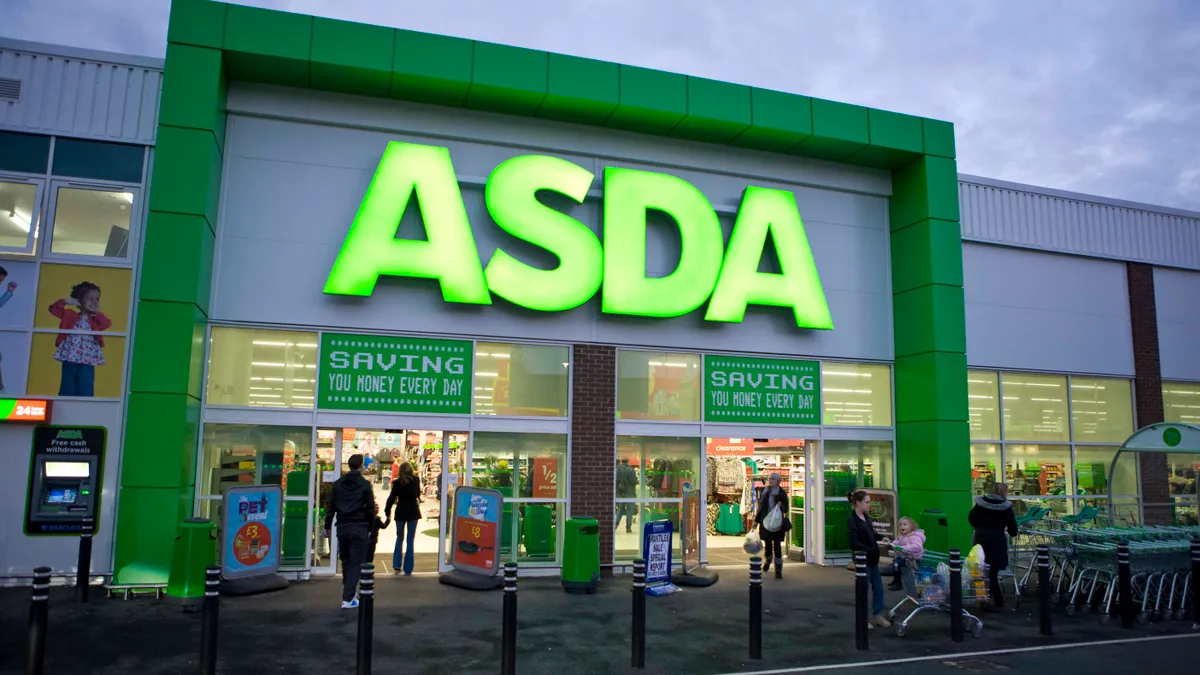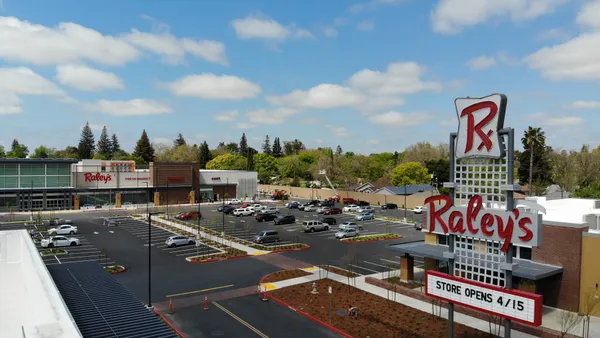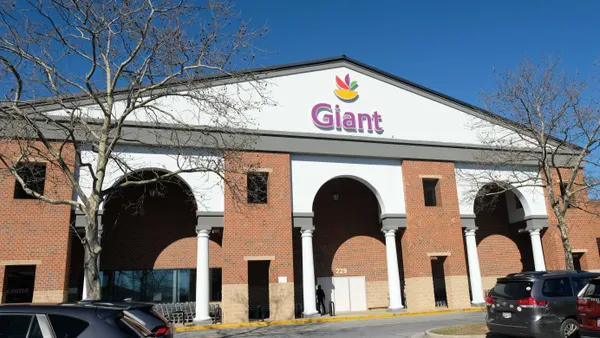Dive Brief:
- U.K. regulators have issued a warning over Sainsbury’s proposed merger with Walmart-owned Asda Group that could threaten the deal, according to reports. Walmart and Sainsbury’s first announced the $15.6 billion purchase in April 2018 and promised shoppers increased selection, better product quality and lower prices. Walmart and Sainsbury’s both plan to push forward with the deal, according to a statement.
- Completion of the deal would result in “extensive competition concerns” according to the U.K. Competition and Markets Authority (CMA), which recommended that the parties either leave the table or divest a large number of Asda or Sainsbury’s store locations to mitigate competitive concerns. The CMA said it will issue its final report on the deal in April.
- The proposed merger of England’s second and third largest grocery chains would create a combined market share of 31%, placing it ahead of Tesco, which currently claims 27.7% of the market. The two entities would control almost 60% of the food retail sector in the UK, according to The Guardian.
Dive Insight:
As the CMA’s ruling sent shares of Sainsbury’s and Walmart’s stocks sliding, commentators criticized the ruling as lacking an understanding of the U.K.'s retail sector. “These findings fundamentally misunderstand how people shop in the U.K. today,” Asda representatives said in a statement. The company pointed out how the merger would result in price savings for shoppers and that the deal was independently reviewed by two different industry specialists.
“[The CMA] have fundamentally moved the goalposts, changed the shape of the ball and chosen a different playing field,” Sainsbury’s chief executive, Mike Coupe, added in a radio interview.
As Walmart continues its domestic momentum, it also wants to expand overseas. But as it looks abroad, the mega retailer wants to mitigate its risk and forge partnerships where it makes sense to do so. With its sale to Sainsbury, Walmart would retain a 46% stake in the combined company. Walmart acquired Asda in 1999 but has seen a slowdown in growth due to increasing competition from other retailers in the U.K. — most notably discounters Aldi and Lidl.
The road to world retail domination has been bumpy overall for Walmart. It purchased India’s online e-commerce market Flipkart last year for $16 billion, but the Indian government is now cracking down on domestic e-commerce operations. In 2006, Walmart abandoned efforts to stake out a footprint in Germany and South Korea’s retail markets and in 2016 it shuttered 10% of its Brazilian storefronts. The common denominator in these arguably failed missions seems to be Walmart’s inability to push local suppliers to lower prices the way it does here in the U.S., according to The Associated Press.
After current CEO Doug McMillon took the reigns, the chain pivoted from constructing hundreds of stores in the U.S. each year to concentrating on expanding its online presence through the acquisition of e-commerce startups. It snapped up Jet.com for $3.3 billion in 2016 and has plowed funding into its store pickup and delivery services, reporting e-commerce sales up 43% for the most recent quarter.
Walmart may have seen the writing on the wall because as early as last June it was rumored to been working on a Plan B should U.K. regulators disapprove its proposed acquisition of Asda-Sainsbury’s. The division could still attract a private equity buyer if CMA ultimately says no, as supermarkets are possible candidates for venture capital, according to Private Equity News.












